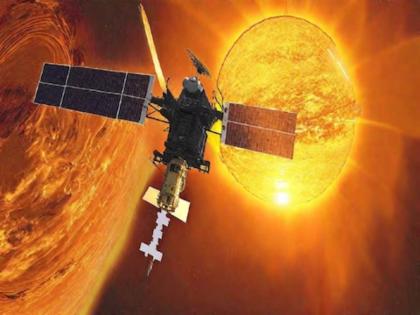ISRO’s Aditya-L1 To Be Placed in Its Final Destination Orbit Today
By Lokmat English Desk | Published: January 6, 2024 11:01 AM2024-01-06T11:01:40+5:302024-01-06T11:02:04+5:30
On Saturday, ISRO is scheduled to execute the ultimate maneuver to position the Aditya-L1 spacecraft into its designated orbit, ...

ISRO’s Aditya-L1 To Be Placed in Its Final Destination Orbit Today
On Saturday, ISRO is scheduled to execute the ultimate maneuver to position the Aditya-L1 spacecraft into its designated orbit, marking a significant milestone for the first Indian space-based observatory dedicated to studying the Sun. The spacecraft is set to be stationed approximately 1.5 million kilometers away from Earth in its final destination orbit.
According to ISRO officials, the spacecraft will be placed in a halo orbit around Lagrange point 1 (L1) of the Sun-Earth system, about 1.5 million km from the Earth. The L1 point is about one per cent of the total distance between the Earth and the Sun.
Being in a halo orbit around the L1 point, a satellite enjoys a notable advantage of maintaining uninterrupted visibility of the Sun, devoid of any occultations or eclipses. This unique orbital position offers a distinct edge in observing solar activities and promptly monitoring their impact on space weather in real-time.
This manoeuvre (at around 4 pm on Saturday) will bind the Aditya-L1 to a halo orbit around L1. If we don’t do this, there is a possibility that it will continue its journey, maybe towards the Sun, an ISRO official told PTI on Friday. The Polar Satellite Launch Vehicle (PSLV-C57) launched the Aditya-L1 spacecraft from the second launch pad of Satish Dhawan Space Centre (SDSC), Sriharikota, on September 2 last year.
After a flight duration of 63 minutes and 20 seconds, it was successfully injected into an elliptical orbit of 235×19500 km around the Earth. The spacecraft underwent a series of maneuvers thereafter and headed Sun-Earth Lagrange Point 1(L1), having escaped the Earth’s sphere of influence.
The spacecraft carries seven payloads to observe the photosphere, chromosphere and the outermost layers of the Sun (the corona) using electromagnetic and particle and magnetic field detectors. Using the special vantage point L1, four payloads directly view the Sun and the remaining three payloads carry out in-situ studies of particles and fields at the Lagrange point L1, thus providing important scientific studies of the propagatory effect of solar dynamics in the interplanetary medium, according to the space agency.
Open in app